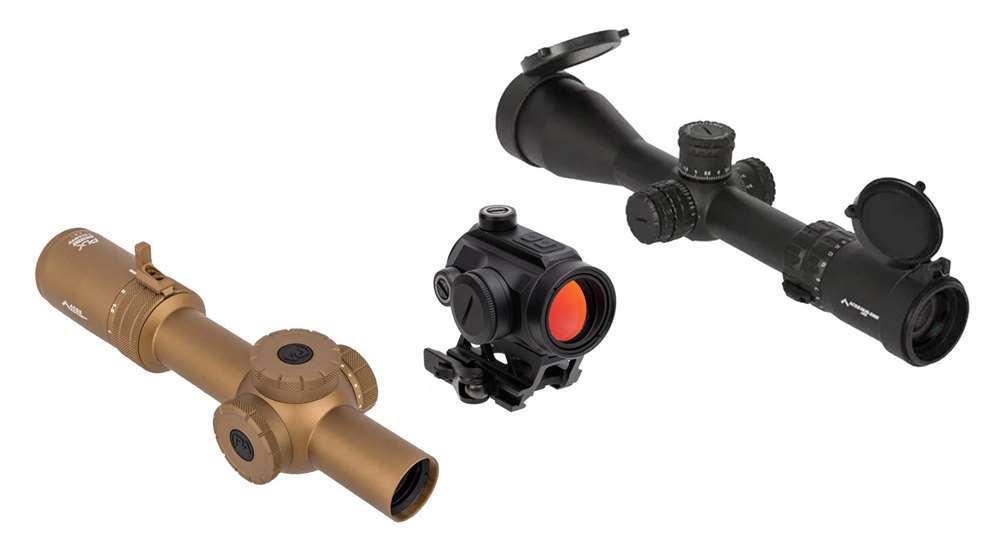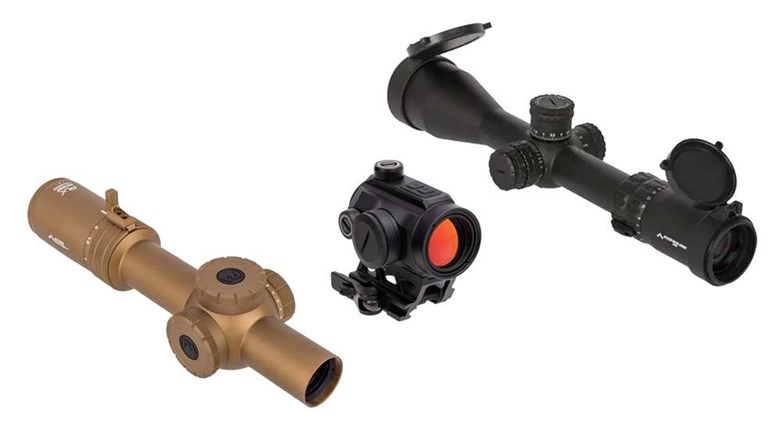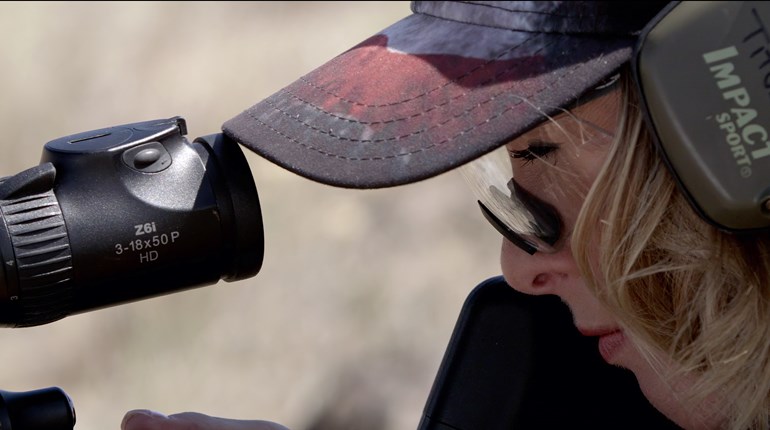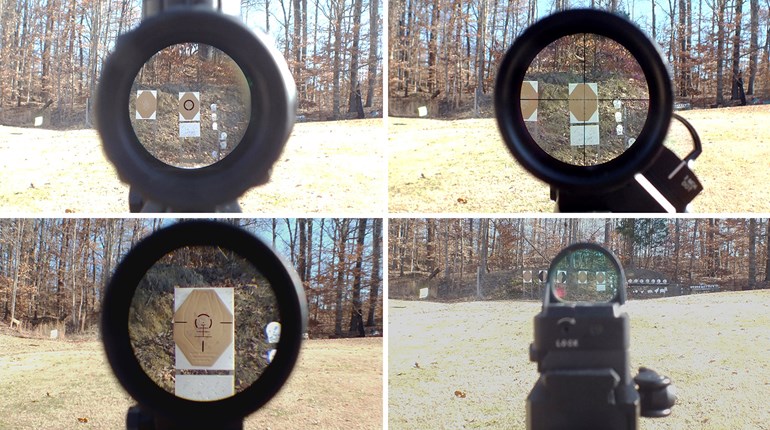
When it comes to optics for firearms, the specific terms that people use to describe them can be confusing. Here's what all that argot actually means...in alphabetical order, no less.
Contrast
The ability of an optical system to distinguish clearly and crisply between areas of light and dark is called contrast. For shooting purposes, always select the riflescope with the highest contrast.
Exit Pupil
Exit pupil is the diameter, in millimeters, of the beam of focused light transmitted by the ocular lens. The exit pupil can be calculated by dividing the diameter of the objective lens by the power, or magnification, of the scope. An exit pupil of about 5mm or larger in diameter is preferable. A large exit pupil provides a brighter image with greater contrast and a wide field of view for easy target acquisition. Exit pupils smaller than 5mm in diameter offer darker images with lower contrast and progressively narrower fields of view.
Eye Relief
Eye relief is the distance of the eye from the ocular lens when the image fully fills the lens and is not vignetted. Normally, eye relief figures are given as a distance range, for example 3.2 to 3.8 inches, due to differences in individual visual acuity. On a variable-power scope, eye relief typically changes with scope power. Too little eye relief is undesirable, particularly on a scope mounted on a hard-kicking magnum rifle, where it may contribute to a "scope bite" on the eyebrow. For this reason, most centerfire riflescopes have a minimum eye relief of 3 to 4 inches. A riflescope with an eye relief of less than 3 inches should only be used on a small-caliber rifle with low recoil.
Most riflescopes and shotgun scopes are designed to be mounted on the receiver, close to the eye, and thus have relatively short eye relief. Scopes to be mounted on handguns and on the barrels of long guns are classed as long eye relief (LER) or extended eye relief (EER) scopes. Some models provide as much as 18 to 20 inches of eye relief, enabling scope use on a handgun extended at arm's length. Other models may offer an eye relief of 12 inches or less for scope mounting on a scout rifle. Note that the higher the magnification, the shorter the eye relief of such scopes.
Field of View
Field of view is the width of the area that can be seen in the image at a given distance. Normally, field of view is expressed as the number of feet in the image at 1,000 yards, for example 322 feet at 1,000 yards. Field of view decreases dramatically with increasing magnification. A narrow field of view makes it difficult to find the target and then to hold it in the image. For this reason, a wide field of view may be more important than high scope magnification.
When looking through a scope with a 100-foot field of view at 1,000 yards, a 100-foot-wide object viewed at that distance will just fill the visual field.
Focal Plane
The focal plane is the plane or distance from the objective lens at which light rays from an object converge to form a focused image inside the main tube. Objects in the same focal plane appear to the eye to be at the same distance, and therefore can be seen with equal clarity without the need to refocus the eye. One of the advantages of optical sights is that the target and the reticle are in the same focal plane. This eliminates trying to focus on both iron sights and the target at the same time. This is why riflescopes are so popular with shooters who have less-than-perfect eyesight.
There are two focal planes in a typical riflescope: The first behind the objective lens, and the second behind the erector lens set.
We have more optics definitions for you on the way ... stay tuned!





































